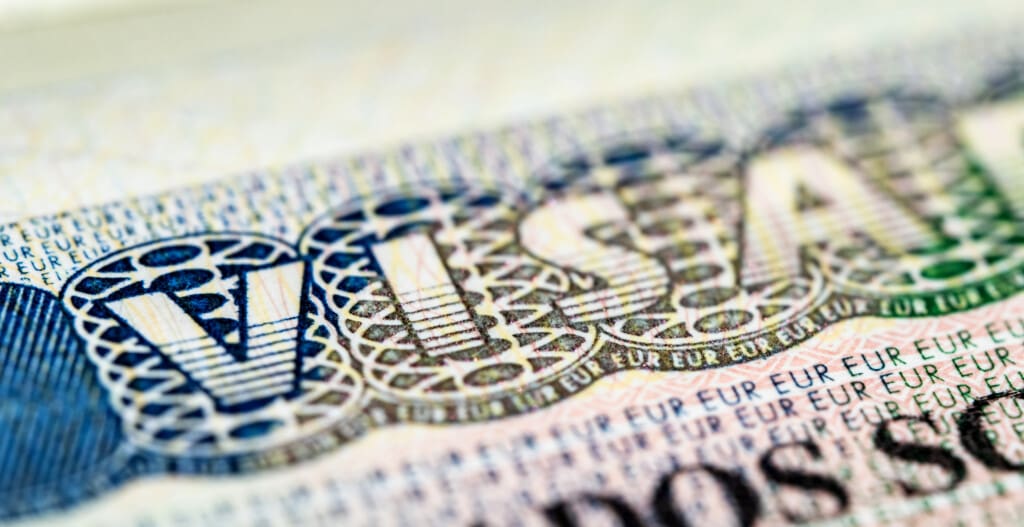This article will provide a detailed step-by-step guide on applying for a European visa. Understanding the visa application process is crucial when planning a vacation, a business trip, or a more extended stay in Europe. We’ll cover everything you need to know to make your application smooth and successful.
Before diving into the application process, it’s essential to understand the various visa types available in Europe. The most common ones include:
Tourist Visa
A tourist visa allows you to visit European countries for leisure, tourism, or family visits. It’s typically granted for a short duration.
Business Visa
You’ll need a business visa if you’re traveling for business purposes, such as meetings, conferences, or negotiations.
Schengen Visa
The Schengen Visa is a unique visa that allows you to visit 26 European countries within the Schengen Area using a single visa.
You need relevant documents like a valid passport, travel insurance certificate, passport-size photos with white backgrounds, an attested copy of a bank statement, and a copy of the hotel reservation at the destination country.
Determine Your Eligibility
Now that you know the types of visas, let’s talk about the eligibility criteria to apply for a European visa.
Passport Requirements
Ensure your passport is valid for at least six months beyond your planned return date.
Financial Stability
You may be required to prove that you have enough funds to cover your expenses during your stay.
Research Your Destination
Europe consists of both Schengen and non-Schengen countries. Depending on your destination, you’ll need to follow specific visa requirements.
Schengen Area Countries
These countries share a common visa policy. If you plan to visit any of them, you’ll need a Schengen Visa. some Schengen states require consultation on visa applications by citizens of certain countries
Non-Schengen Countries
You’ll need to apply for a separate visa for countries outside the Schengen Area.
Collect Required Documents
Gathering the necessary documents is a critical step in the application process to apply for European visa.
Application Form
Complete the visa application form accurately and honestly.
Passport Photos
Get recent passport-sized photos that meet the specified requirements.
Travel Itinerary
Provide a detailed itinerary of your trip, including flight bookings and other travel documents.
Proof of Accommodation
Show proof of where you’ll be staying during your visit.
Travel Insurance
Purchase travel insurance that covers medical expenses and repatriation.
Appointment Booking
The process for booking an appointment may vary by country.
Online Appointment
Many countries allow you to book your appointment online.
In-Person Submission
Sometimes, you may need to submit your application in person at the consulate or embassy.
Visa Fees
Visa fees can vary depending on the type of visa and your nationality.
Application Fees
Pay the required application fee when submitting your application.
Additional Charges
There may be additional fees for services like expedited processing.
Attend the Visa Interview
Prepare for the visa interview, as it’s a crucial part of the application process.
Interview Preparation
Familiarize yourself with common interview questions and practice your responses.
Common Interview Questions
Expect questions about your travel plans, financial status, and the purpose of your visit.
Biometrics Collection
Sometimes, you must provide biometric data, such as fingerprints and photographs.
Fingerprinting and Photograph
Follow the instructions provided for biometric data collection.
Waiting for Processing
After submitting your application and attending the interview, you must wait for processing.
Processing Time
Processing times can vary, so apply well in advance of your travel date.
Application Tracking
Use the provided tracking system to check the status of your application.
Visa Approval
Once your visa is approved, you can proceed with the final steps.
Visa Stamping
Get your visa stamped on your passport.
Visa Validity
Note the validity dates of your visa, including the entry and exit dates.
Visa Denial
In case of a visa denial, it’s essential to understand why and how to proceed.
Common Reasons for Denial
Review common reasons for visa denials and address any issues.
Reapplying After Denial
If your visa is denied, you can reapply after addressing the reasons for denial.
Preparing for Your Trip
With your visa in hand, it’s time to prepare for your journey.
Flight Booking
Confirm your flight bookings and travel arrangements.
Travel Essentials
Pack your travel essentials, including important travel documents and medications.
Arrival in Europe
Upon arrival in Europe, you’ll go through customs and immigration.
Customs and Immigration
Follow the procedures at the airport or border entry point.
Extending Your Stay
If you plan to extend your stay in Europe, be aware of the visa extension process.
Visa Extension Process
Learn how to apply for a visa extension if needed.
Conclusion

Congratulations! You are now well-prepared to apply for a Europe visa and embark on your European adventure. Remember to follow the guidelines and requirements specific to your destination, and enjoy your trip to Europe.
Frequently Asked Questions
1. What is the Schengen Area, and how does it affect my visa application?
The Schengen Area is a group of 26 European countries that have abolished border controls at their mutual borders, allowing for passport-free travel within the area. If your travel plans include visiting one or more Schengen countries, you will typically apply for a Schengen Visa, which allows you to travel freely within these countries using a single visa. Be sure to check the specific countries you intend to visit and apply for the appropriate visa accordingly.
2. Can I apply for multiple-entry visas to Europe?
Yes, multiple-entry visas are available for Europe, depending on your travel needs and the type of visa you apply for. A multiple-entry visa allows you to enter and exit the Schengen Area or other European countries multiple times within the visa’s validity period. The availability of multiple-entry visas and their validity periods can vary, so check with the respective consulate or embassy for specific details.
3. What should I do if my visa application is stuck in processing for an extended period?
If your visa application is taking longer than the usual processing time, it’s advisable to first check the status of your application using the provided tracking system. If there’s a significant delay, you can contact the consulate or embassy where you submitted your application for an update. Sometimes, delays occur due to high application volumes or additional processing requirements.
4. Are there any specific health and safety measures I should be aware of when traveling to Europe?
Health and safety measures can vary by country and may change over time, especially in response to global events like pandemics. It’s essential to stay informed about any travel advisories, health requirements, and safety protocols for your destination. Check the official websites of the countries you plan to visit and stay updated on any vaccination or testing requirements, quarantine regulations, and local guidelines for COVID-19 or other health concerns.
5. How far in advance should I apply for a Europe visa before my planned trip?
It’s recommended to apply for your Europe visa well in advance of your planned trip, ideally at least 2 to 3 months before your intended travel date. This allows ample time for the visa processing, appointment scheduling, and any additional documentation you may need to provide. Applying early ensures that you have your visa in hand well before your departure date, reducing stress and last-minute complications.
Remember that visa application processes can vary by country, so always consult the specific consulate or embassy website for the most up-to-date information and guidelines related to your visa application.




